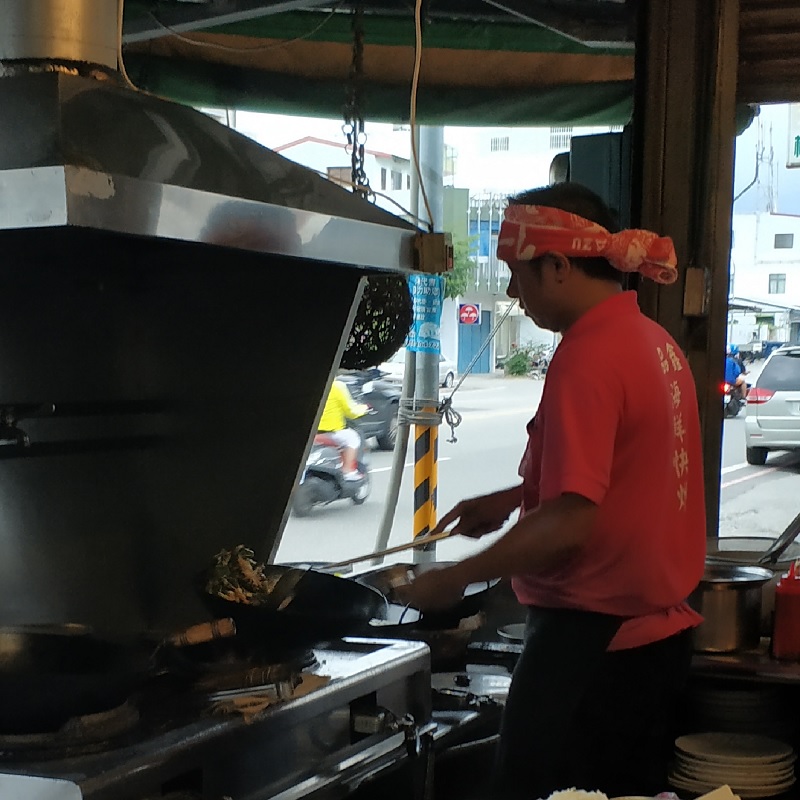Tossing heavy woks is a contributing factor to shoulder pain amongst chefs in Chinese restaurants. To celebrate Chinese New Year, we look back on a paper published in Journal of the Royal Society Interface which used modelling to optimise the process.

This popular paper published in Journal of the Royal Society Interface examines how mathematical modelling can be used to aid the design of woks. To mark Chinese New Year, we spoke with the study authors, Hungtang Ko (HK) and Professor David L. Hu (DH) at the Georgia Institute of Technology, about the background to the study and its practical applications.
Can you tell us about yourself and your general field of research?
I grew up having terrible eyesight. I started to wear glasses on my first day of primary school. To prevent the condition from worsening, my mother banned me from reading. However, it only opened my mind and eyes to everyday sights. I was mesmerised by the way water swirls near the drain, how ants coordinate and form long trails, and how chefs could catch rice in every wok toss…(HK)
In a fascinating speech at the University of Pennsylvania, Professor David Hu compared fire ant aggregations to flowing honey. The speech left a deep impression on me and eventually led to our collaborations, including the project on tossing fried rice. Our general research interest is the analysis and modelling of everyday phenomena. We break down the phenomena in sight, using theoretical, experimental and numerical approaches. (HK)
This appears to be a very unusual topic – what inspired you to investigate it?
David and I were talking about a fun paper to do while I was in Taiwan. I was teaching English in a middle school, where I came across a book called The Science of Good Cooking in its Chinese edition in the library. The book contained rigorous research in food science, and I was amazed by how they used scientific methods to compare different cooking techniques. However, I also noticed that it only covered western cuisines. (HK)
Frying rice is the best way to cook leftover dishes so I make it almost every week. As a kid, I always tried to imitate professional chefs and flip the wok. However, I always ended up with a very messy stove since the ingredients were flying all over the place. I have had a deep appreciation for chefs since then. Now equipped with more scientific skills and knowledge and knowing that there exists this gap in Eastern cuisine food science, I decided to start exploring. (HK)
Hungtang did his experiments at mom-and-pop shops specialising in fried rice in rural Taiwan. The rice was mouth-watering and the high-speed videos that Hungtang took were fantastic. It was as if the rice was being juggled in the air and then landing in a well-timed rhythm. Then when we learned that fried rice had been made for over 1500 years, we knew that we had an interesting story on our hands. (DH)

Huntang Ko
What was your paper about and can you tell us about any practical applications of your study?
We studied how wok motion and shape influences the trajectory of fried rice. The reason why this is an interesting question is the paradox of making fried rice. Fried rice tastes best when it is cooked at 1200 degrees Celsius. These high temperatures cause a special Maillard chemical reaction that gives fried rice its special flavour known as Wok Hei, or “breath of wok.” However, if rice is exposed to heat for too long it will burn. Making fried rice is thus a special balance between high temperature contact and the cooling that takes place when the rice flies through the air. (DH)
By filming professional chefs, we found that the best wok motion has a balance of rocking and sliding motions. Imagine flipping a pancake with a 1.4 kg pan three times per second and doing it 20 times in a row. This feat is only possible because of the chef’s technique and the curved shape of the wok, which allows the weight of the wok to be in contact with the stove at all times while still throwing rice into the air. Tossing the heavy wok may be one contributor to shoulder injuries which are experienced by 64% of Chinese chefs. We hope that increasing understanding of wok motion will help in designing automated cooking devices and other kinds of aids to prevent injury. (DH)
Since the paper was published, we have been contacted by chefs around the world and companies specialising in cooking technology, such as Glenn Lee, who invented mechanical chopsticks! (DH)
What was your experience of publishing in Journal of the Royal Society Interface?
The experience publishing with Journal of the Royal Society Interface was smooth. The reviewers provided helpful feedback. We were also pleased to be contacted by the editor who selected us to provide the cover picture for the journal. Lastly, I particularly enjoy the style design of the Royal Society journals. (HK)
J. R. Soc. Interface continues to deliver in terms of speed, quality and fairness of reviews, and I like that the website uses Altmetric to keep track of news and social media reports on our articles. The journal also does an excellent job of reaching the broader press. We were particularly pleased with a story on our research published in CNN. (DH)
Hungtang has also been interviewed by radio and news outlets around the world, including PRI the world podcast, ABC radio Tasmania, Atlas Obscura and Cosmos magazine. None of this would have been possible without J. R. Soc. Interface. (DH)
What is the future for your research?
Currently, we are researching the collective behaviour in fire ants, an impressive species that can make rafts to float on water surfaces. Similarly to the wok tossing project, we aim to model and describe the behaviours using a rigorous maths and physics framework. (HK)
These days my lab is doing a lot of work in soft materials, including the pellet of bees and the properties of elephant trunks. (DH)
I would love to publish another paper involving athletic feats involved in cooking. I think cooking is a great combination of chemistry, material science, and real cleverness from the chefs. (DH)
Journal of the Royal Society Interface publishes a wide range of innovative research at the boundary of physics and biology. Check out our website to find out more or to send us your next paper.
Images
1) A restaurant in Taitung, Taiwan, which specialises in stir-fry food. Data underlying the mathematical modelling was derived from recordings of the restaurant chefs.
2) Hungtang Ko




